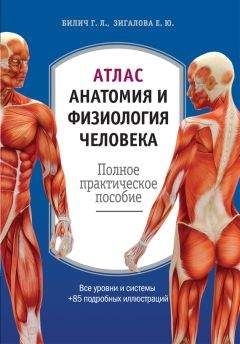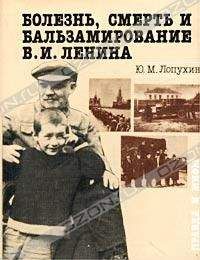Милтон Селигман - Обычные семьи, особые дети
Hess, R. D. (1970). Social class and ethnic influences upon socialization. In P. H. Mussen (Ed.), Carmichael's manual of child psychology (pp. 457-557). New York: Wiley.
Hickson, G. В., Altemeier, W. A., & O'Connor, S. (1983). Concerns of mothers seeking care in private pediatrics offices: Opportunities for expanding services. Pediatrics, 72, 619-624.
Hill, C. (1982). Our patients have culture. Clinical Management of Physical Therapy, 2, 5-10.
Hines, P. M. (1989). The family life cycle of poor black families. In B. Carter & M. McGoldrick (Eds.), The changingfamily life cycle (2nd ed., pp. 513-544). Boston: Allyn & Bacon.
Hines, R M., & Boyd-Franklin, N. (1982). Black families. In M. McGoldrick, J. K. Pearce, & J. Giordano (Eds.), Ethnicity and family therapy (pp. 84-107). New York: Guilford Press.
Hobbs, D. F, Jr., & Wimbish, J. M. (1977). Transition to parenthood by black couples. Journal of Marriage and the Family, 18, 677-690.
Hobbs, N., Perrin, A., & Ireys, S. (1986). Chronically ill children and their families. San Francisco: Jossey-Bass.
Hoffman, L. (1981). Foundations of family therapy. New York: Basic Books.
Holden, R. H. (1972). Prediction of mental retardation in infancy. Mental Retardation, 10, 28-30.
Hollingshead, А. В., & Redlich, F C. (1958). Social class and mental illness: A community study. New York: Wiley.
Holroyd, J. (1974). The questionnaire on resources and stress: An instrument to measure family response to a handicapped member. Journal of Community Psychology, 2, 92-94.
Holt, K. S. (1958a). Home care of severely retarded children. Pediatrics, 22, 744-755.
Holt, K. S. (1958b). The impact of mentally retarded children upon their families. Unpublished doctoral dissertation, University of Sheffield, England.
Hormuth, R. P. (1953). Home problems and family care of the mongoloid child. Quarterly Review of Pediatrics, 8, 274-280.
Hornby, G. (1988). Fathers of handicapped children. Unpublished manuscript, University of Hull, England.
Hornby, G. (1994). Counselling in child disability: Skills for working with parents. London: Chapman & Hall.
Hornby, G., & Ashworth, T. (1994). Grandparent support for families who have children with disabilities: A survey of parents. Journal of Child and Family Studies, 3, 403-412.
Hornby, G., & Murray, R. (1983). Group programmes for parents of children with various handicaps. Child Care Health and Development, 9, 185-198.
Houser, R., & Seligman, M. (1991). Acomparison of stress and coping by fathers of adolescents with mental retardation and fathers of adolescents without mental retardation. Research in Developmental Disabilities, 12, 251-260.
Huang, L. J. (1976). The Chinese-American family. In С. H. Mindel & R. W. Habenstein (Eds.), Ethnic families in America: Patterns and variations (pp. 124-147). New York: Elsevier.
Hies, J. (1979). Children with cancer: Healthy siblings' experience during the illness experience. Cancer Nursing, 2, 371 – 377.
Israelite, N. (1985). Sibling reaction to a hearing-impaired child in the family. Journal of Rehabilitation of the Deaf, 18, 1-5.
Ivey A. E., & Simek-Downing, B. (1980). Counseling and psychotherapy: Theories and practice. Englewood Cliffs, NJ: Prentice-Hall.
Jackson, J. J. (1981). Urban black Americans. In A. Harwood (Ed.), Ethnicity and medical care (pp. 37-129). Cambridge, MA: Harvard University Press.
Jacobson, R. В., & Humphrey, R. A. (1979). Families in crisis: Research and theory in child mental retardation. Social Casework, 60, 597-601.
JFK Child Development Center. (1981). HOME Screening Questionnaire. Denver, CO: LADOGA.
Joe, J. R., & Malach, R. S. (1992). Families with Native American roots. In E. W. Lynch & M. J. Hanson (Eds.), Developing cross-cultural competence: A guide for working with young children and their families (pp. 89-119). Baltimore: Brookes.
Jones, R. L., & Wilderson, F В., Jr. (1976). Mainstreaming and the minority child: An overview of issues and a perspective. In R. L.Jones (Ed.), Mainstreaming and the minority child (pp. 1-13). Reston, VA: Council for Exceptional Children.
Judge, G. (1987). Knock, knock. It's no joke. Zero to Three, 8, 20-21.
Kahana, G., & Kahana, E. (1970). Grandparenthood from the perspective of the developing grandchild. Developmental Psychology, 3, 98-105.
Kahn, M. D., & Lewis, K. G. (1988). Siblings in therapy: Life span and clinical issues. New York: Norton.
Kaiser, A. P., & Fox, J. J. (1986). Behavioral parent training research. In J. J. Gallagher & P. M. Vietze (Eds.), Families of handicapped persons (pp. 219-235). Baltimore: Brookes.
Kappes, N. (1995). Matrix. In D. L. Meyer (Ed.), Uncommon fathers: Reflections on raising a child with a disability (pp. 13-18). Bethesda, MD: Woodbine.
Kavanagh, K. H., & Kennedy, P. H. (1992). Promoting cultural diversity: Strategies for health care professionals. Newbury Park, CA: Sage.
Kazak, A. E. (1987). Professional helper and families with disabled children: A social network perspective. Marriage and Family Review, 11, 177-191.
Kazak, A. E., & Marvin, R. S. (1984). Differences, difficulties, and adaptation: Stress and social networks in families with a handicapped child. Family Relations, 33, 61-11.
Kazak, A, & Wilcox, B. (1984). The structure and function of social support networks in families with handicapped children. American Journal of Community Psychology, 12, 645-661.
Keefe, S. E., Padilla, A. M., & Carlos, M. L. (1979). The Mexican American extended family as an emotional support system. Human Organization, 38, 144-152.
Kelker, K, Garthwait, C, & Seligman, M. (1992). Rural special education options. Human Services in the Rural Environment, 15, 14-17.
Kennedy, J. E (1970). Maternal reactions to the birth of a defective baby. Social Casework, 51, 410-416.
Kibert, R. P. (1986). A descriptive study of the perceptions of normal college age siblings in families with a mentally retarded child. Unpublished doctoral dissertation, University of Pittsburgh.
Kirkman, M. (1985). The perceived impact of a sibling with a disability on family relationships: A survey of adult siblings in Victoria, Australia. Sibling Information Network Newsletter, 4, 2-5.
Kiser, B. (1974). New light of hope. New Canaan, CT: Keats.
Kitano, H. H. L., & Kikumura, A. (1976). The Japanese-American family. In С. H. Mindel & R. W. Habenstein (Eds.), Ethnic families in America: Patterns and variations (pp. 41-60). New York: Elsevier.
Klein, C. (1977). Coping patterns of parents of deaf-blind children. American Annals of the Deaf, 122, 310-312.
Klein, S. D. (1972). Brother to sister: Sister to brother. Exceptional Parent, 2, 10-15.
Klein, S. D. (1994). The challenge of communication with parents. In R. B. Darling & M. I. Peter (Eds.), Families, physicians, and children with special health needs: Collaborative medical education models (pp. 51-74). Westport, CT: Greenwood.
Kleinman, A., Eisenberg, L.,& Good, В. (1978). Culture, illness and care: Clinical lessons from anthropologic and cross-cultural research. Annals of Internal Medicine, 88, 251-258.
Kline, E, Acosta, E X., Austin, W., & Johnson, R. G., Jr. (1980). The misunderstood Spanish-speaking patient. American Journal of Psychiatry, 737 (12), 1530-1533.
Kohn, M. L. (1969). Class and conformity: A study in values. Homewood, IL: Dorsey.
Konstam, V, Drainoni, M., Mitchell, G., Houser, R., Reddington, D., & Eaton, D. (1993). Career choices and values of siblings with individuals with developmental disabilities. School Counselor, 40, 287-292.
Korn, S. J., Chess, S., & Fernandez, P. (1978). The impact of children's physical handicaps on marital quality and family interaction. In R. M. Lerner & G. B. Spanier (Eds.), Child influences on marital and family interaction: A life-span perspective (pp. 299-326). New York: Academic Press.
Krahn, G. L. (1993). Conceptualizing social support in families of children with special health needs. Family Process, 32, 235-248.
Krauss, M. W., & Giele, J. Z. (1987). Services to families during three stages of a handicapped person's life. In M. Ferrari & M. B. Sussman (Eds.), Childhood disability and family systems (pp. 213-229). New York: Haworth.
Krauss, M. W., & Seltzer, M. M. (1993). Coping strategies among older mothers of adults with retardation: A life-span developmental perspective. In A. P. Turnbull, J. M. Patterson, S. K. Behr, D. L. Murphy, J. G. Marquis, & M. J. Blue-Banning (Eds.), Cognitive coping, families, and disability (pp. 173-182). Baltimore: Brookes.
Kubler-Ross, E. (1969). On death and dying. New York: Macmillan.
Kunitz, S. J., & Levy, J. E. (1981). Navajos. In A. Harwood (Ed.), Ethnicity and medical care (pp. 337-396). Cambridge, MA: Harvard University Press.
Kurtz, R. A. (1977). Advocacy for the mentally retarded: The development of a new social role. In M. J. Begab & S. A. Richardson (Eds.), The mentally retarded and society: A social science perspective (pp. 377-394). Baltimore: University Park Press.
Kurtz, R. A. (1975). Social aspects of mental retardation. Lexington, MA: Heath.
Laborde, P. R., & Seligman, M. (1991). Counseling parents with children with disabilities. In M. Seligman (Ed.), The family with a handicapped child (2nd ed., pp. 337-369). Boston: Allyn & Bacon.
Lamb, M. E. (1983). Fathers of exceptional children. In M. Seligman (Ed.), The family with a handicapped child: Understanding and treatment (pp. 125-146). Orlando, FL: Grune & Stratton.
Lamb, M. E., & Meyer, D. J. (1991). Fathers of children with special needs. In M. Seligman (Ed.), The family with a handicapped child [2nd ed., pp. 151-179). Boston: Allyn & Bacon.
Landers, A. (1986, October). Ann Landers advice column.
Laosa, L. M. (1974). Child care and the culturally different child. Child Care Quarterly, 3, 214-224.
Laosa, L. M. (1978). Maternal teaching strategies in Chicano families of varied socioeconomic levels. Child Development, 49, 1129-1135.
LaRossa, R. (1977). Conflict and power in marriage: Expecting the first child. Beverly Hills: Sage.
Laureys, K. (1984). Growing up with Brian. Sibling Information Network Newsletter, 3, 5-6.
Lazerson, M. (1975). Educational institutions and mental subnormality: Notes on writing a history. In M. J. Begab & S. A. Richardson (Eds.), The mentally retarded and society: A social science perspective (pp. 33-52). Baltimore: University Park Press.
Lechtenberg, R. (1984). Epilepsy and the family. Cambridge, MA: Harvard University Press.
Lee, E. (1982). A social systems approach to assessment and treatment for Chinese American families. In M. McGoldrick, J. K. Pearce, & J. Giordano (Eds.), Ethnicity and family therapy (pp. 527-551). New York: Guilford Press.
Leifield, L., & Murray, T. (1995). Advocating for Aric: Strategies for full inclusion. In В. B. Swadener & S. Lubeck (Eds.), Children and families «at promise»: Deconstructing the discourse of risk (pp. 238-261). Albany: State University of New York Press.
LeMasters, E. E. (1957). Parenthood as crisis. Marriage and Family Living, 19, 352-355.
LePontois, J., Moel, D. I., & Cohn, R. A. (1987). Family adjustment to pediatric ambulatory dialysis. American Journal of Orthopsychiatry, 57, 78-83.
Levine, E. S. (1960). Psychology of deafness. New York: Columbia University Press.
Lewis, J., & Greenstein, R. M. (1994). A first-year medical student curriculum about family views of chronic and disabling conditions. In R. B. Darling & M. I. Peter (Eds.), Families, physicians, and children with special health needs: Collaborative medical education models (pp. 77-100). Westport, CT: Green wood.
Lewis, 0. (1959). Five families: Anintimate and objective revelation of family life in Mexico to day– A dramatic study of the culture of poverty. New York: Basic Books.
Lieberman, A. F (1990). Infant-parent intervention with recent immigrants: Reflections on a study with Latino families. Zero to Three, W., 8-11.
Lipscomb, J., Kolimaga, J. Т., Sperduto, P. W., Minnich, J. K., & Fontenot, K. J. (1983). Cost-benefit and cost-effectiveness analyses of screening for neural tube defects in North Carolina. Unpublished manuscript, Duke University, Institute for Policy Sciences, Durham, NG.
Lobato, D. (1983). Siblings of handicapped children: A review. Journal of Autism and Developmental Disorders, 13, 347-364.
Lobato, D. J. (1990) Brothers and sisters with special needs. Baltimore: Brookes.
Locust, G. (1988, June). Integration of American Indian and scientific concepts of disability: Cross-cultural perspectives. Paper presented at the meeting of the Society for Disability Studies, Washington, DC.
Lorber, J. (1971). Results of treatment of myelomeningocele. Developmental Medicine and Child Neurology, 13, 279-303.
Lurie, E. (1970). How to change the schools: A parent's action handbook on how to fight the system. New York: Vintage.
Luterman, D. (1984). Counseling the communicatively disordered and their families. Boston: Little, Brown.
Luterman, D. J. (1979). Counseling parents of hearing-impaired children. Boston:
Little, Brown. Lynch, E. W. (1992). Developing cross-cultural competence. In E. W. Lynch & M. J. Hanson (Eds.), Developing cross-cultural competence: A guide for working with young children and their families (pp. 33-59). Baltimore: Brookes.
Lynch, E. W., & Hanson, M. J. (1992). Developing cross-cultural competence: A guide for working with young children and their families. Baltimore: Brookes.




